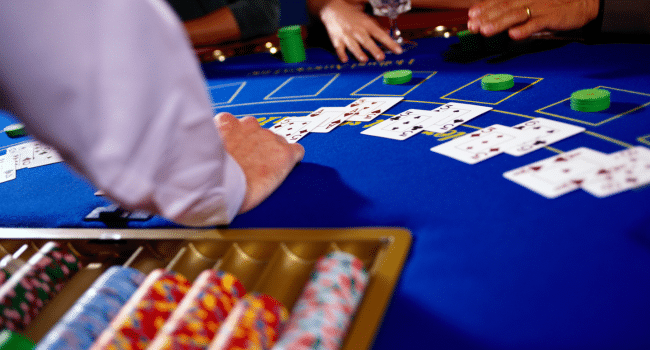Some call it Ving-et-Un, while others call it 21. Either way, blackjack is a card game that can be found in casinos all over the world, and it is the centerpiece of the top online casinos. It is a simple game to learn compared to poker games like Texas Hold’em. However, there is a method to the madness towards winning at blackjack. Made by blackjack players, this guide helps beginners through the rules and expert strategies to call 21.
- What is blackjack: The objective of blackjack is to have a hand that is closer to 21 than the dealer’s hand without going past 21. Of course, there is also the chance to win the hand by just standing on your hand and hoping the dealer busts by going over 21.
- Basic blackjack rules: The game begins with each player placing their bet. The dealer passes two cards to each player and two cards to themselves. One of the dealer’s cards is face-up and the other is face-down. This face-down card is known as the “hole card.” In European Blackjack casino games, the dealer doesn’t get the second card until all the players have made their moves.
- Counting the blackjack cards: Before moving on to basic blackjack strategy, it’s important to know the card values. Unlike baccarat, aces can count for either eleven or a single point. The tens, as well as Kings, Queens, and Jacks, all count for ten points. The other cards count straight up. Jokers aren’t used in blackjack games.
- Getting to 21: If your first two cards equal a natural blackjack, then congratulations, you get a 3:2 payout. However, to finish at 21 or the highest hand, you will need to hit, stand, or possibly double down and split.
- Hitting: To hit playing blackjack means getting an additional card. While there is no limit to hitting, every hit can lead to busting.
- Standing: To stand is to finish the playing round with the card value you have. In fact, you can stand after getting your first two cards. However, standing on a weak hand can have you wind up losing. The smart move is to stand between 13 and 16.
- Doubling Down: Most blackjack games support doubling down. To double down is to hit for one final card in the playing round. This requires matching your original bet. However, if you win, you get double the bet. Like standing on a weak hand, doubling down on a weak hand can lead to losing twice your bet.
- Splitting: Conventional blackjack games support breaking up a pair into two separate playing hands. Without doubt, split aces because the odds of having two winning hands go up dramatically. When you split, you must match your original bet. While you can split tens, the odds don’t favor it. Simply stand to most likely win the playing round. Depending on the game, you might only be able to split one time during the playing round.
- Side Bets: Games like Perfect Pairs support side bets. Side bets are totally optional. The allure is to build up your wins. However, most blackjack side bets like the 21+3 and Perfect Pairs have a higher house edge, which makes them risky. Most blackjack games have an RTP of at least 99%.
- Choose the right game: Thanks to the expansive growth of online casinos, there are more online blackjack games than ever before, including those that you can’t play in person. Classic Blackjack is widely available and is a great start for beginners. Spanish 21 is a bit more advanced because there aren’t tens in the deck. When starting, it makes sense to play the RNG blackjack games powered by AI technology. That way, you can play at your pace without the pressure of keeping up with the live dealer play.
- Consider a chart: Many blackjack players feel comfortable playing with a strategy chart. The purpose of the chart is to help you know when to hit, stand, and double down. However, over-reliance on the strategy chart and betting strategies can quickly go through your playing budget.
In conclusion, while playing blackjack is one of the more simpler card games, it still takes some basic strategy. When starting out, consider sticking to single-game blackjack titles instead of multi-hand so you can build up some confidence.
